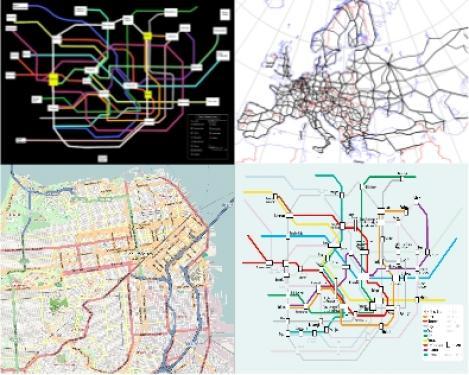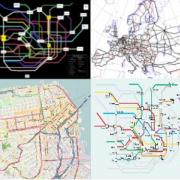Mobility and distance-depending costs, random walks and urban planning. When a complex network is embedded into space, things change as far as the study approach is concerned.
We asked a few questions to Marc Barthelemy, researcher in the field of Space Networks, about the lectures cycle he will held from 7 to 9 february, 2011 in Cagliari University. Here's what he explained us.
How does the dimension of "space" add information to Complex Networks?
Some networks are naturally embedded in space. Examples are transportation and mobility networks, Internet, mobile phone networks, power grids, social and contact networks and neural networks. For all these examples, it is not enough to give the topological structure: nodes have a certain spatial distribution which is necessary to give in order to fully characterize the network. Since nodes are located in space, an important consequence is the fact that usually there's a cost associated to the length of links (which is not the case, instead, of complex networks in abstract space): this has dramatic effects on the topological structure of these networks.
In summary, one can say that for the 'spatial' networks there is a strong coupling between space and topology: the fact that some networks are embedded in space has profound consequences on their structure.
Can you give us an example of space networks studies applied to an existing case of urban management?
All mobility studies in urban systems need to take into account the structure of transportation networks, which are spatial networks. All GIS applications use spatial networks and these networks have appeared at the core of all transportation studies since more than 40 years ago, starting with geographers such as Haggett and
Chorley. Also, new directions of studies seem to indicate that the structure of street networks, for example, is strongly related to socio-economical factors (such as unemployment rate, crime rate, density of stores), suggesting that spatial networks analysis could be an essential tool in urban planning.
Does the space shape also online social networks?
Yes, it has been recently shown using data from social networks, such as Facebook, that the probability to be friend with someone depends on distance (and decays as a power law): most of your friends are in your spatial neighborhood and you have only a few friends at a longer distance.
"Randow walks": how does this process work and in which way is it related to the human behaviour in our urban environments?
This is another question about random walks and mobility. For example, one could imagine that individual movements in a urban system is described by a random walk (ie. an individual jumps randomly from one to the other) on a infrastructure network. However, this is still in debate.
Read more about the lectures cycle on Linkalab Events.
Please download here the lectures cycle slides.

